This year, the prestigious Sasol New Signatures competition clocked an unprecedented number of entries – 1013, to be exact – coming in from all across the country. Comparatively, 2023 submissions totalled 765. It's undoubtedly one of the most interesting art initiatives in South Africa, open to citizens of all ages, artists working in all mediums, and practitioners who are both formally educated or self-taught. Practically the only qualifying factor is that they've not yet had a solo exhibition.
Out of the mass of entries this year, 137 works made it to the final exhibition at the Pretoria Art Museum, where the overall winner, runner-up, and merit award recipients for 2024 are also on show alongside the solo of the 2023 Sasol New Signatures winner, Nosiviwe Matikinca. It's astonishing to see the breadth and diversity of the works in the winning exhibition, brought forth in practically every medium conceivable from paint and ink on plastic water carriers to sculpted sand.
So too, it's mind-boggling to think about what went into this show logistically, with works – some of them impossibly delicate – transported from all corners of South Africa. There are paintings, drawings, and photographic prints, sculptural and textile pieces, and a remarkable number of installation-based works.
For over three decades Sasol New Signatures has been making its mark on the local art world, removing some of the usual barriers to entry and bringing fresh voices to the fore. Reflecting on the competition, Sasol's vice president Elton Fortuin says, "Over the years, Sasol New Signatures has become a rich tapestry of our collective history, stories, and voices. Once again, this exhibition presents a wide spectrum of narratives that provoke a myriad of thoughts and reactions."
According to Pfunzo Sidogi, chairperson of the Sasol New Signatures art competition, this year's final round of judging was the toughest yet. "Among other things, words like 'subtly compelling,' 'poignant,' 'technically virtuosic,' 'majestic,' 'wonderful technique,' and 'carefully modelled' were used by the judges to describe the nature of the artworks in the winner’s circle," Sidogi says. "This anecdote of how five judges, coming from totally distinct positionalities and experiences, can find consensus in determining the characteristics of the winning artworks shows how art can transcend cultural, racial, linguistic, and personal differences."
It's a fitting sentiment that upholds the unifying power of art and the ongoing importance of Sasol New Signatures as a platform for artists in South Africa today. Alumni of the competition include Patrick Rulore, Richard Penn, Mohau Modisakeng, Lebohang Kganye, and Mondli Mbhele, placing this year's winners in excellent company. Without further ado, get to know the artists who were a cut above the rest in 2024.
2024 Sasol New Signatures winner, Miné Kleynhans
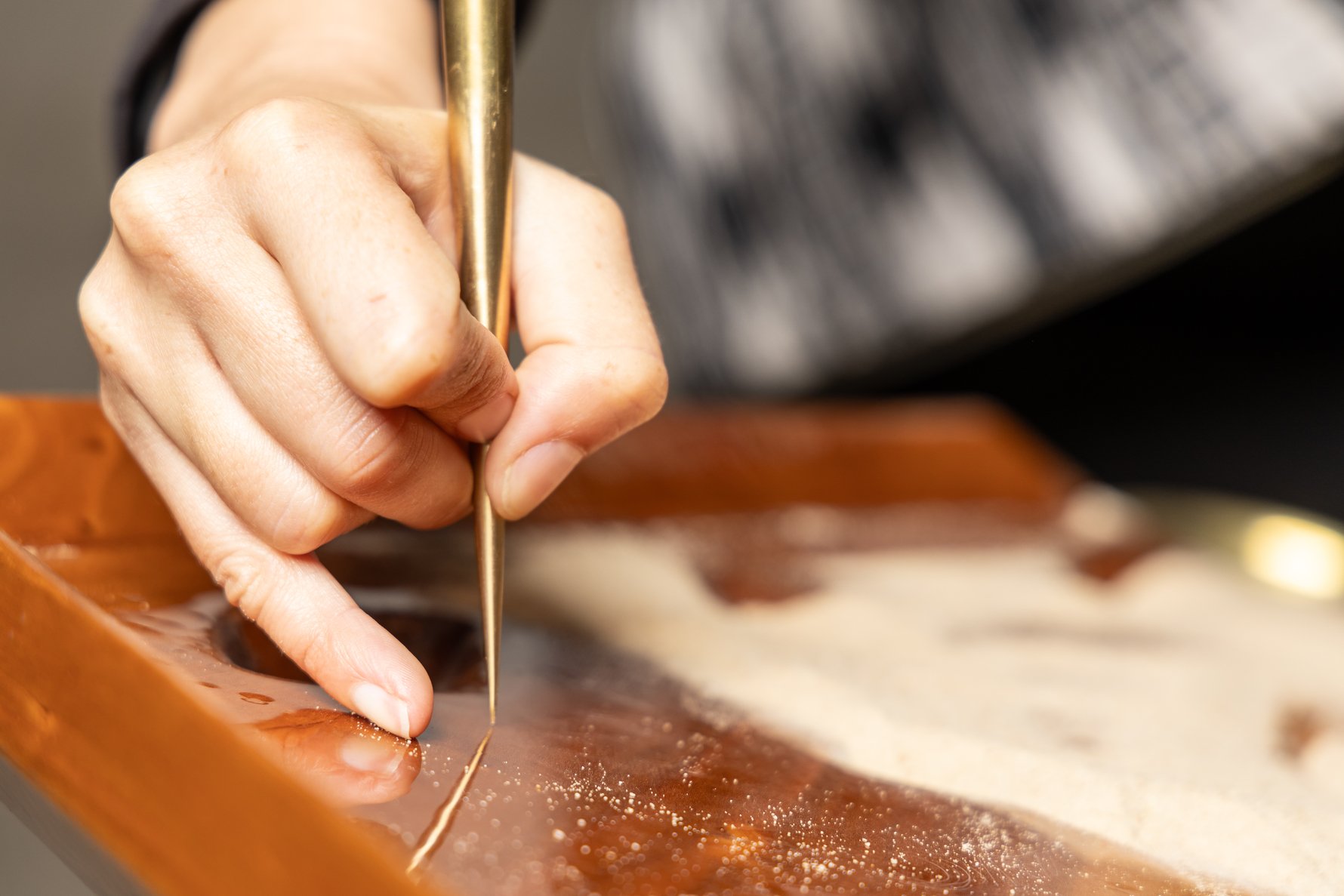
For her interactive installation piece Meditations on Resentment, Miné Kleynhans (34) from Bloemfontein is the winner of Sasol New Signatures art competition for 2024.
By day a project manager at the University of the Free State Art Gallery and a practising artist, Kleynhans says, "My heart started thumping in my chest when I heard that I was a finalist – I was very happy and excited."
Kleynhans' unusual winning work creates space for an intimate ritual sanctioning the experience and expression of resentment – an emotion often held with secrecy. Approaching the artwork, it's initially unclear what is expected of the viewer. Made of solid wood, copper, and brass, the piece looks utterly strange at first glance, like a many-legged creature, though it's not without mysterious beauty.
Participants are presented with the shiny, indented surface of the work, a brush with a sharpened end, and a bowl of sand. Those who choose to engage in the ritual may kneel in front of the work and pour sand onto the indented surface. Then, the task is to write your resentment(s) in the sand with the sharp end of the brush before sweeping the sand away and out of the closest cavity until the sharp, hard kernel of a brass thorn is revealed. Rinse and repeat as many times as your resentment(s) require.
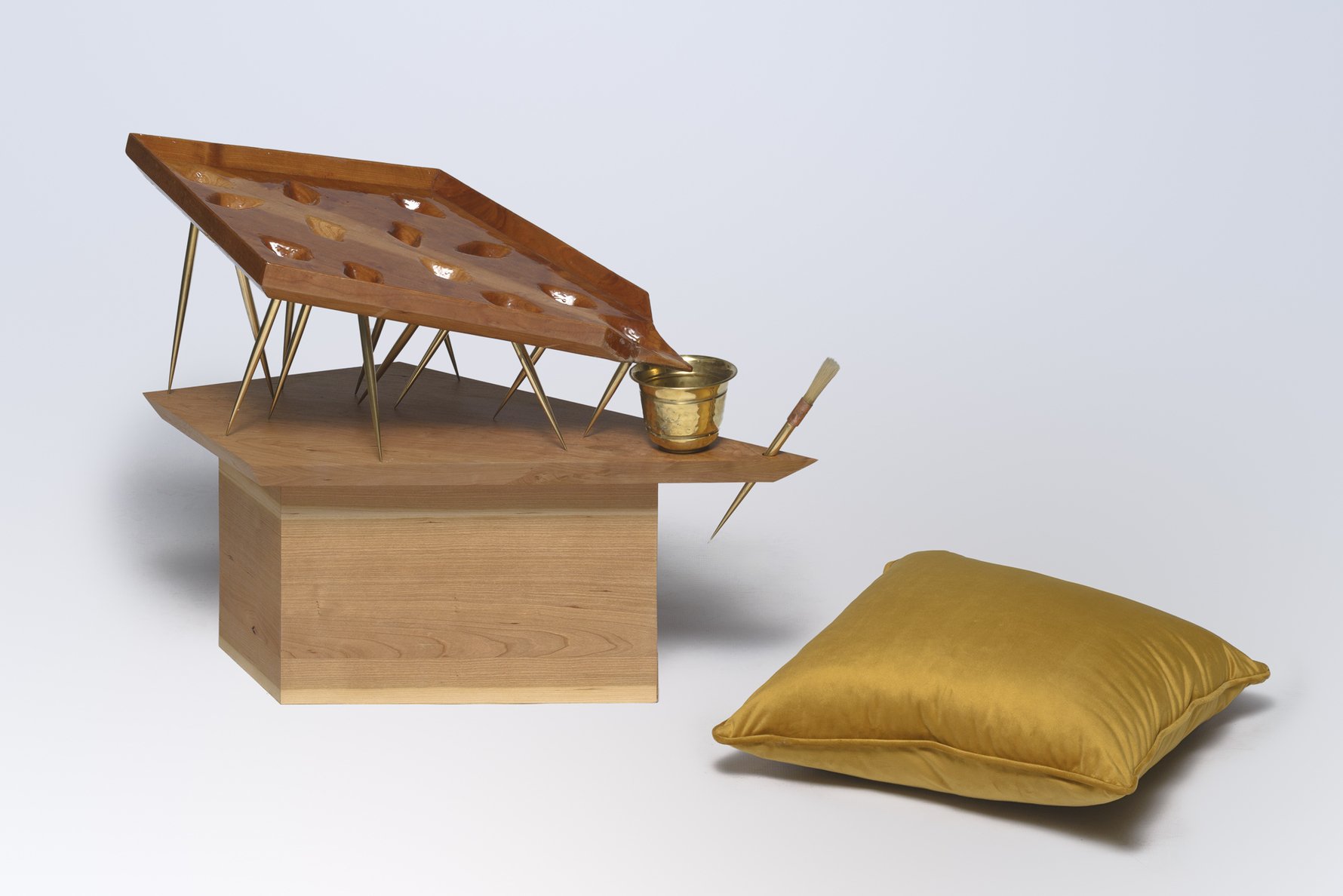
"I am interested in articulating suppressed, unnoticed or hidden things that shape or are shaped by people's habitual thinking and emotional patterns," says the artist. "In the case of this particular work, I was party to discussions in which resentment carried special emphasis. It is an emotional state that is hard to admit to and difficult to share openly. It has an underhanded, semi-conscious quality and yet it is such a strong current in people's lives. 'Sanctioning' the expression of resentment feels like a dangerous thing to do, but it is also something that has a stranglehold on people's emotional lives and should be spoken about."
Kleynhans gave every aspect of this installation great consideration, thinking about what resentment feels like – "It's sharp, shiny, and hard," she says – or how it would make participants feel to kneel on a cushion to engage with the work. "I really hope that it makes people want to physically interact with it. Maybe even that it has some kind of seductive quality in that sense," she explains. Recognising it may be difficult to navigate in a gallery setting, she hoped to facilitate a real ritual, prompting people to engage with the less charitable or forgiving aspects of themselves.
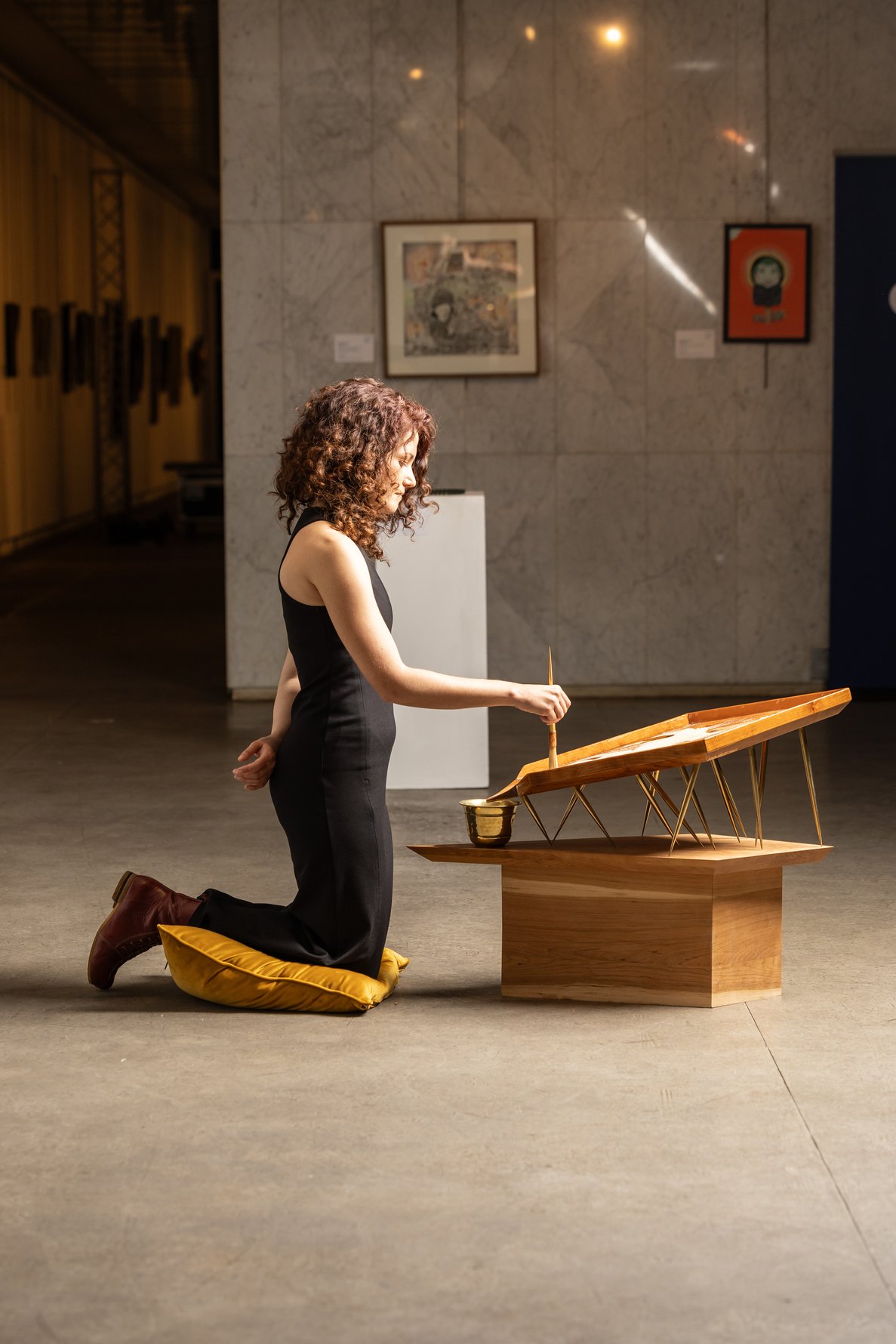
As is the nature of installation art, images don't do justice to Meditations on Resentment. It begs to be seen and engaged with in person, and the humbling act of kneeling to do so is a vital part of the experience. Over time, the scratched words will create a stigmata-like impression of partially revealed resentments on the wooden surface, deepening the piece with time.
As the overall winner, Kleynhans takes home a cash prize of R100,000 and an opportunity to hold a solo exhibition at the Pretoria Art Museum in 2025. "I can imagine filling the gallery space with a series of 'game-like' or sculptural artworks that people need to 'play' or interact with," she muses. We're looking forward to seeing this unfold.
Runner-up for 2024, Tandabantu Nathaniel Jongikhaya Matola
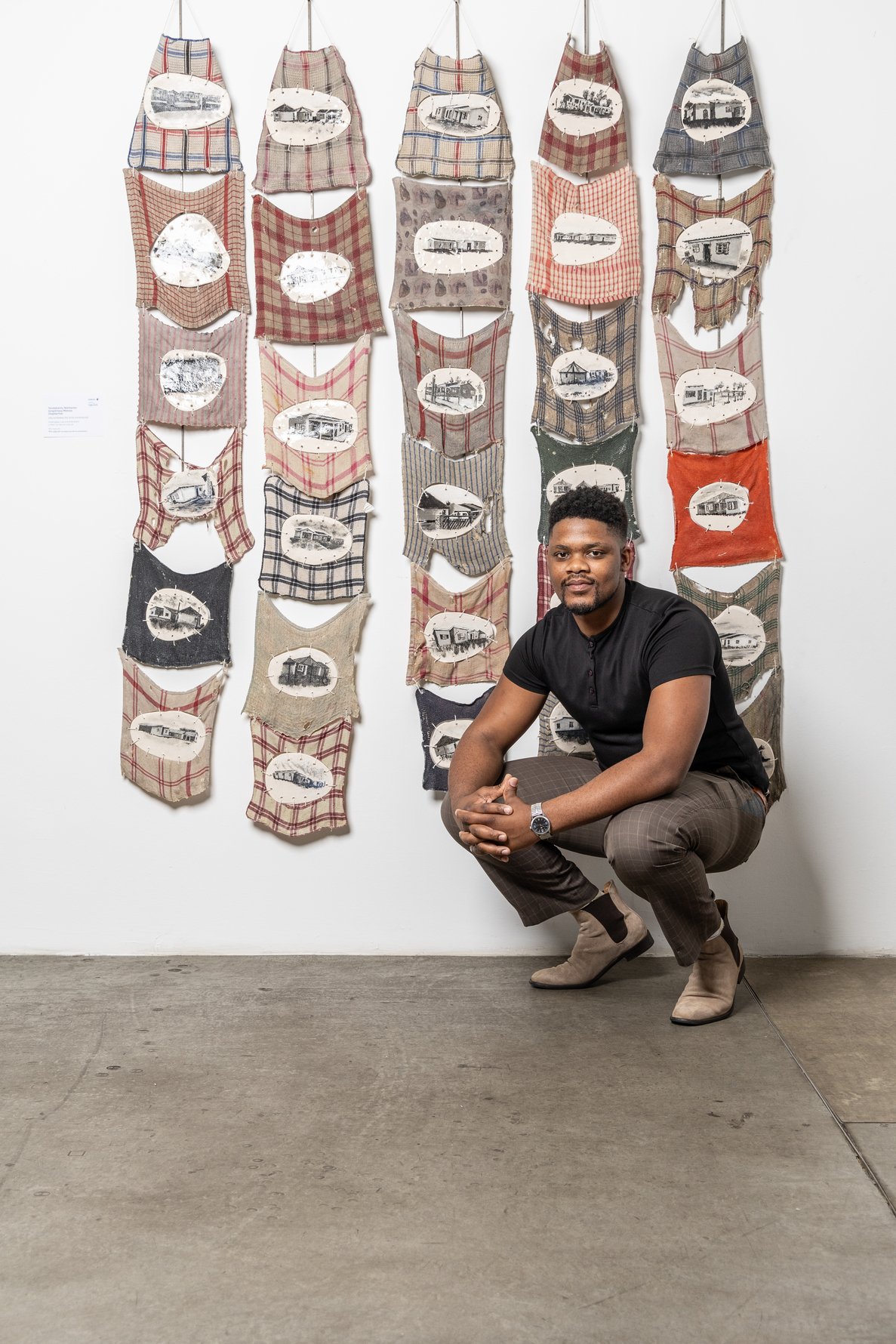
As the runner-up, Gqeberha's Tandabantu Nathaniel Jongikhaya Matola (28) is awarded R25,000 for his work Ukuncikelela (to hold on/endure).
A fine arts student at Walter Sisulu University in the Eastern Cape, this was Matola's first time entering Sasol New Signatures. "I have always wanted to participate but had little knowledge of how to do it," he says. "I could not take part previously until my ceramic lecturer convinced me to enter. It is my first time entering work for a major competition like this, and it means a lot to be among the winners because it is where most young and upcoming artists begin their artistic trajectory and establish themselves in the South African art scene."
Striking a similar chord to last year's winner Nosiviwe Matikinca, who focused on disparities in the education system, Matola's work looks at black South African communities in rural villages who are often forced to keep domestic items longer than they wish to. The idea for the artwork came when he noticed that the dishcloth at his own home was in a bad state.
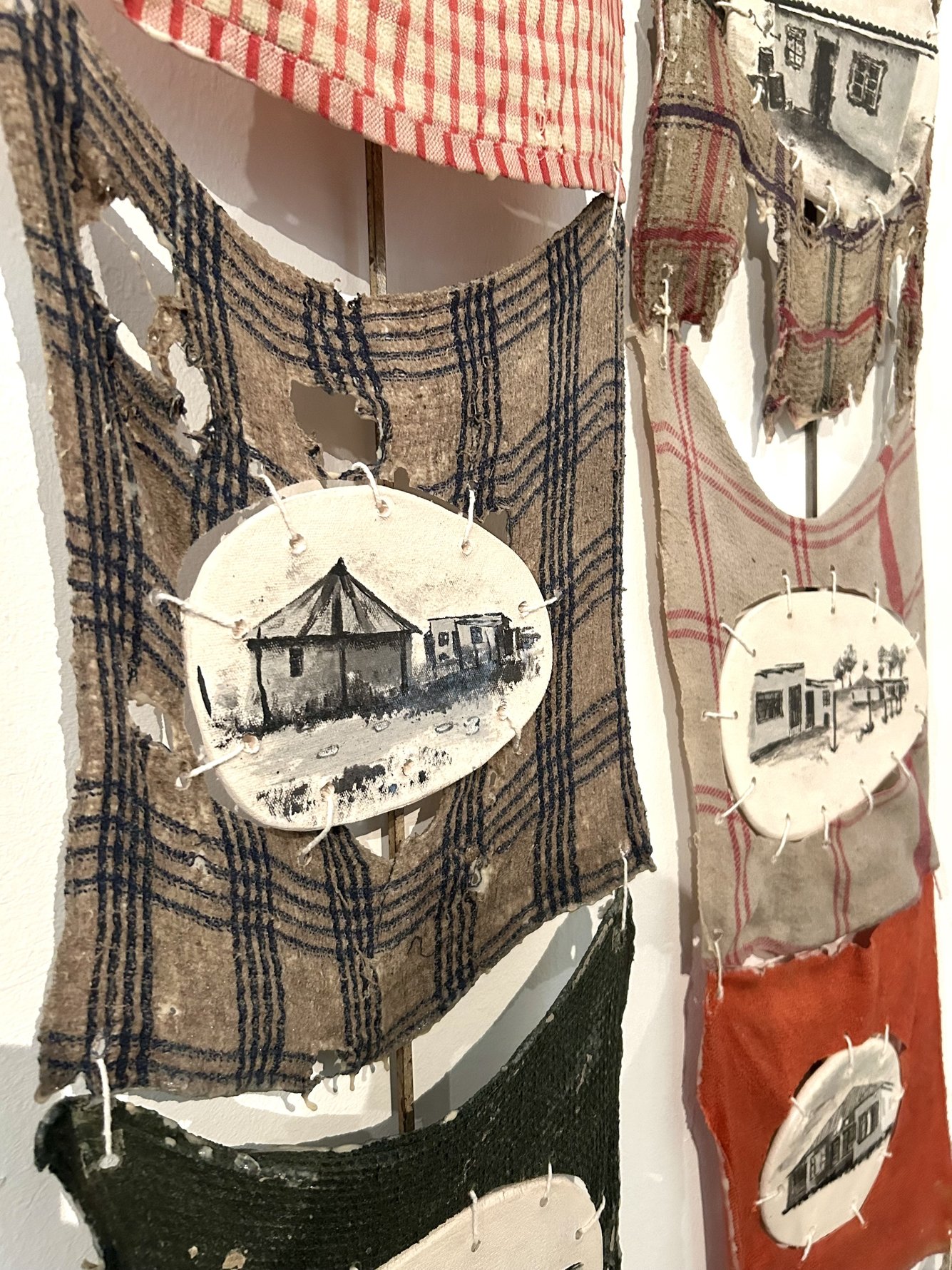
For a beautifully conceived installation, Matola collected worn dishcloths from his village in exchange for new ones. Clay tiles with underglaze drawings of the homes the artist visited are in the centre of each dishcloth, which are woven together in a kind of tapestry. PVA glue holds the cloths in shape, while reinforcing the ukungcola (dirtiness) from overuse. The resourceful and compassionate work symbolises ukuncikelela, which means ‘to hold on’ in isiXhosa.
"Growing up in rural areas with consistent visits to other homes by virtue of friends and family, one develops an inquisitive eye for things, including objects in different spaces, especially as an artist," Matola explains. "However, these observations are also made in one’s intimate space, like one's own home. The observations are made unconsciously in situations where one is, after being served food, offered a dishcloth to wipe hands. It is through making these observations that the idea of interrogating ukuncikelela was born because even at home, I noticed that the dishcloth is one of the items that people hold on to for so long, to the extent of getting too loose. As an artist, this prompted me to investigate gathering dishcloths in my village in exchange for new ones. Not holding on to superstitions that come with taking a personal item from one’s home, people gave them to me willingly."
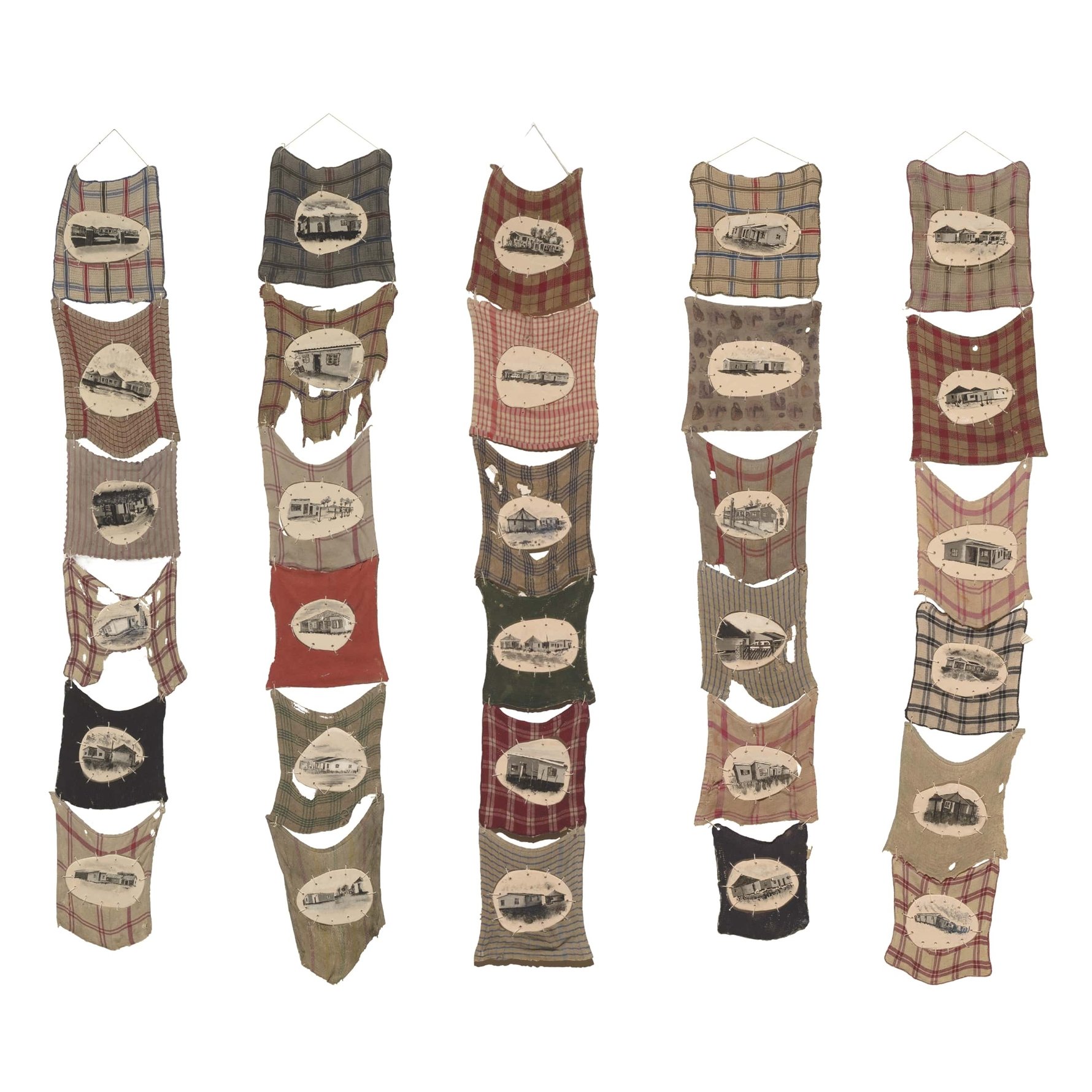
For Matola, his choice of medium reinforces the extent to which poverty can be seen in simple, everyday items, and speaks to the perseverance and persistence of the human spirit.
Despite the challenges faced by rural communities, there are gifts to this way of life, too. Matola says, "I consider growing up in rural areas a privilege because of the openness of space/earth and being intrinsically connected to [the earth]. Clay is earth and is part of my upbringing. I grew up doing [moulding] clay cows, and my love for clay grew from there, but I never knew that it had such potential and depth. I aim to grow in this medium and become a better ceramic artist." Watch this space.
The five 2024 merit award winners
Merit award-winning Pretoria artist Henrico Paul Greyling's (23) large steel sculpture, Through here a flower passed, draw on the dimensions of an archway that led to a room at his grandparent's house, where his grandmother (also an artist) spent the last few years of her life. The structure invites viewers to pass through, allowing the act of movement to become part of the artwork – "a reminder of being alive", says Greyling.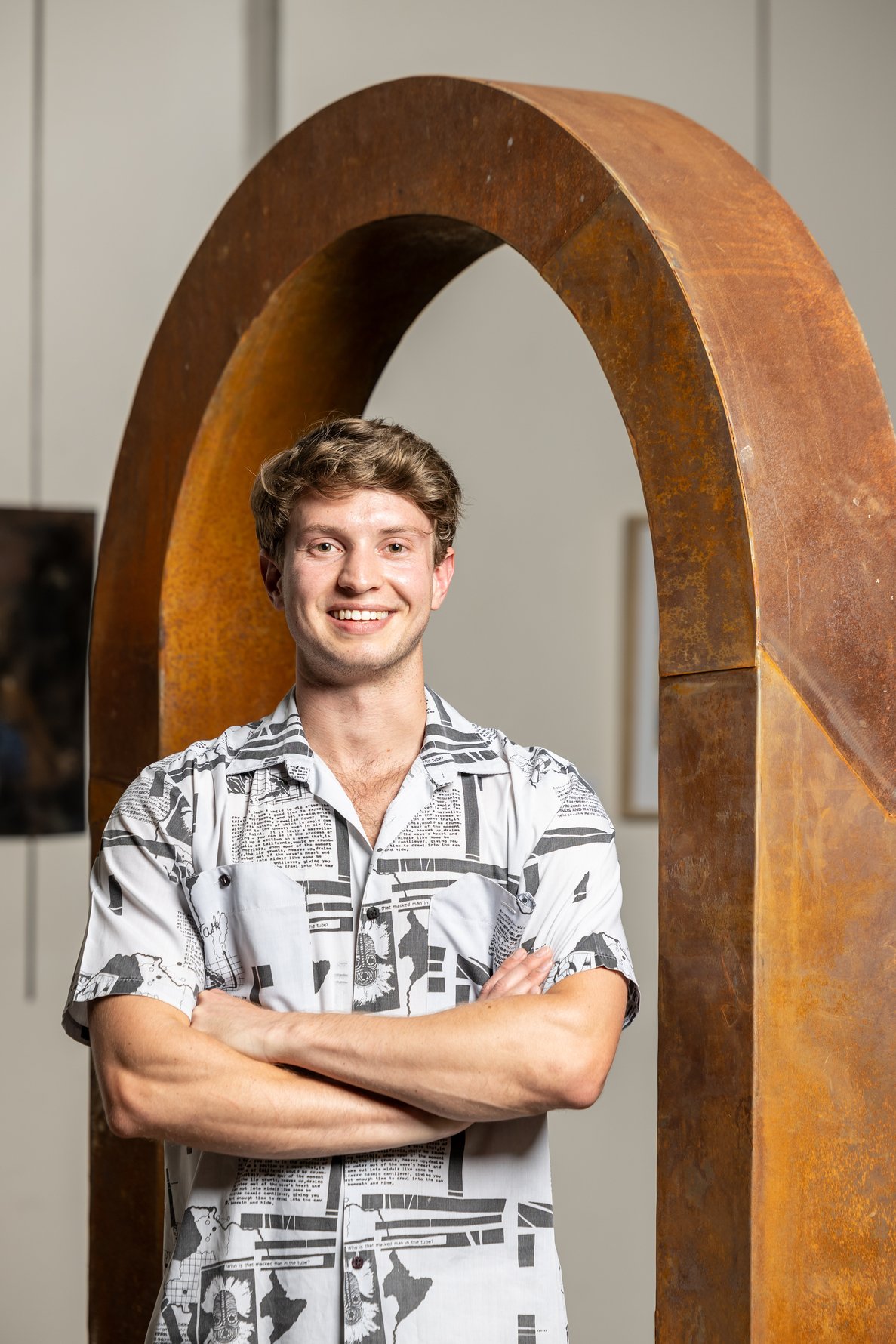
Self-taught artist Themba Mkhangeli (29) from Cape Town won his second merit award this year for the spellbinding ballpoint pen drawing Ubushushu Bekhaya (The warmth of home), inspired by grandmothers as the pillars of communities. "I use ballpoint pen because I grew up without art materials, and it's a simple, affordable tool," says Mkhangeli. Allow us to add that he's mastered the medium; you'd be forgiven for thinking you were looking at a photographic print.
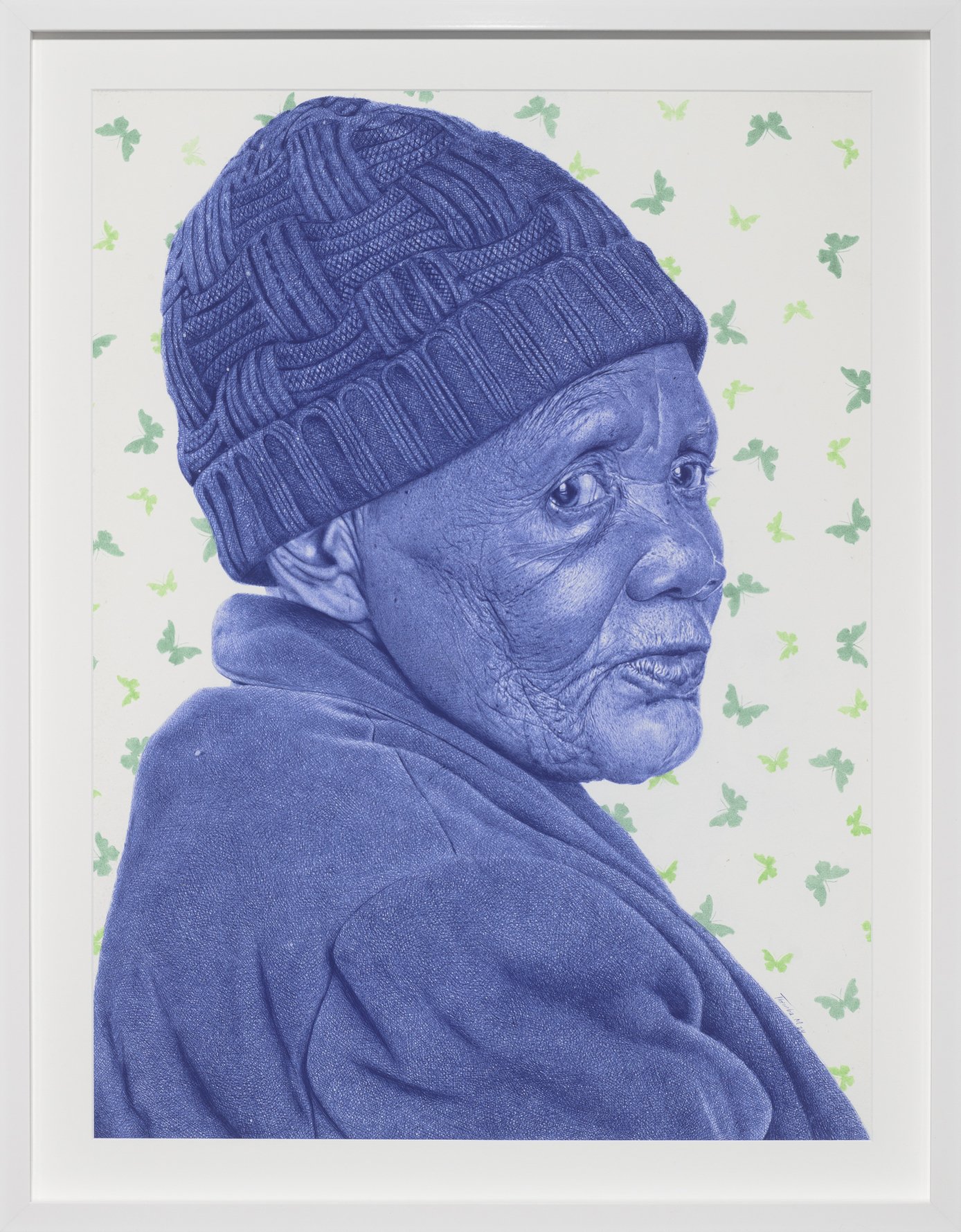
Making use of plastic water containers as his canvasses for skilful scenes in paint and ink, Johannesburg's own Bonginkosi Liyo Mkhatshwa (28) is a merit award winner for his works titled Unity and Traditional innovative water carrier. In these, we see a man carrying water and a family gathered around a fire – common occurrences in South Africa's rural areas that lack service delivery. Yet the tone of Mkhatshwa's work is not one of despondency, but rather of hope.
"[I want to] create awareness and celebrate the daily experiences of rural life; moments of success, joy, love, and friendship found despite adversity," he says.
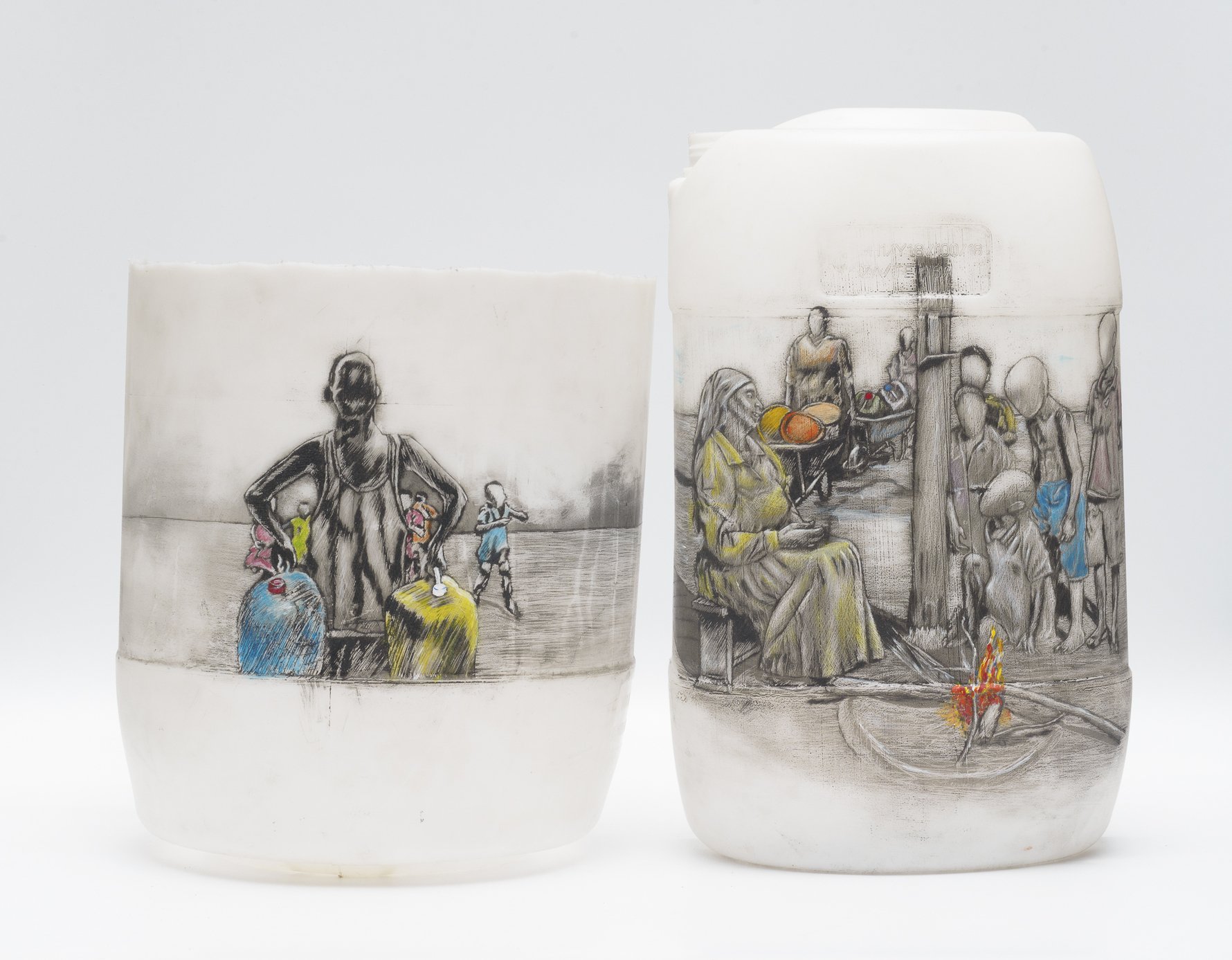
From Gqeberha, Snelihle Asanda Maphumulo (22) wins a merit award for her mixed-media installation Umnikelo. "The inspiration for the body of work is complex in an interesting way because it stems from a place of feeling like an outsider in my own culture," says Maphumulo. The body of work concentrates on the position of women in the Zulu culture, with wax plates signifying acts of service and sheep hides symbolising notions of submission and sacrifice.
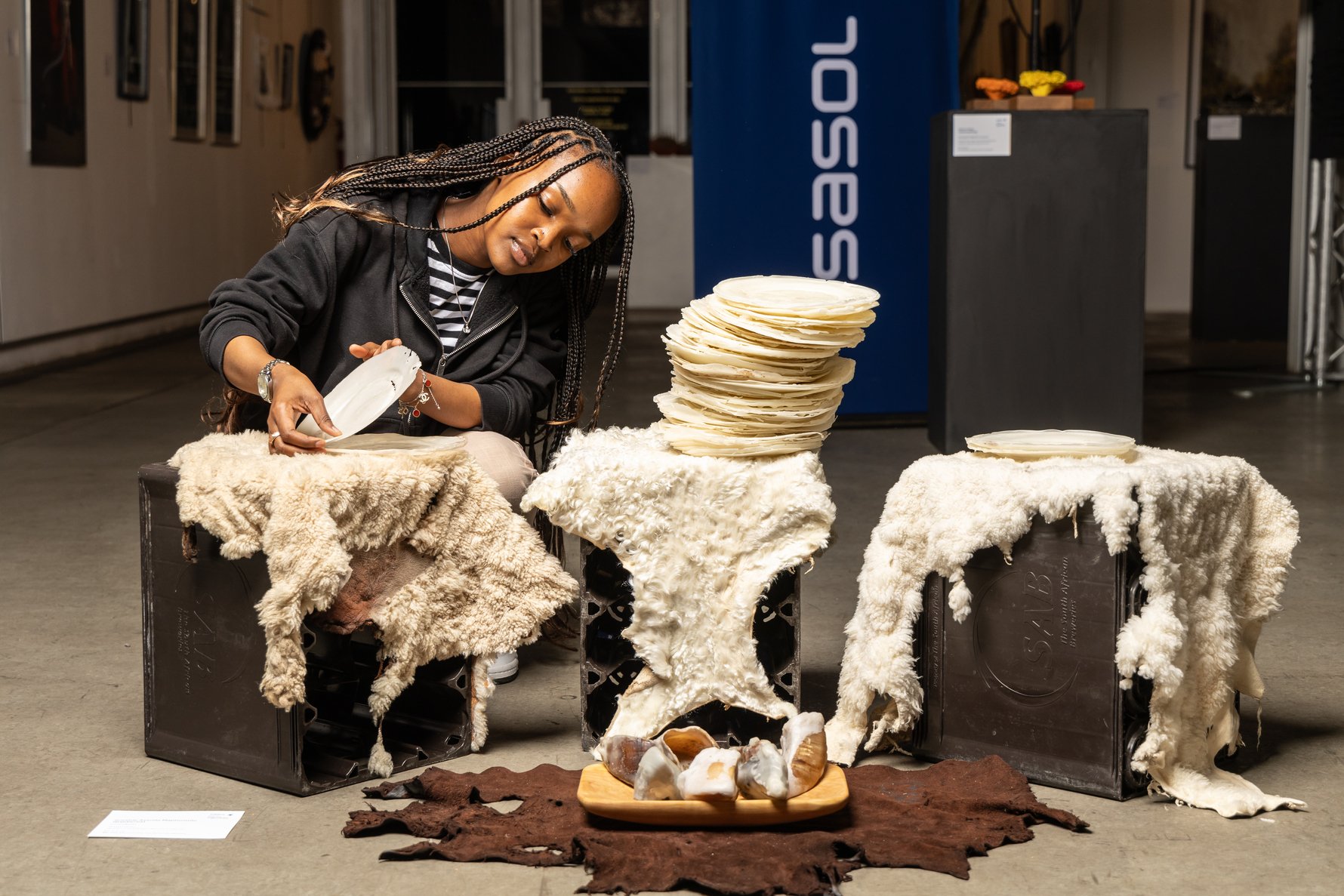
Finally, Juandré van Eck (24) from Gqeberha took home a merit award for his interactive ceramic piece, Waters of life. Made largely of natural clay, water flows through two chambers simulating blood flow in the human body. If the piece is tilted gently, air moving through the pipes emits a sustained whistle that speaks to life's steady rhythm, while rapid movement evokes the sound of a sporadic, panicked heartbeat. "I want a childlike need to touch my work to be invoked, I want people to explore and experience my work actively and not be a bystander. My art needs a person to make it show its full beauty," says van Eck.
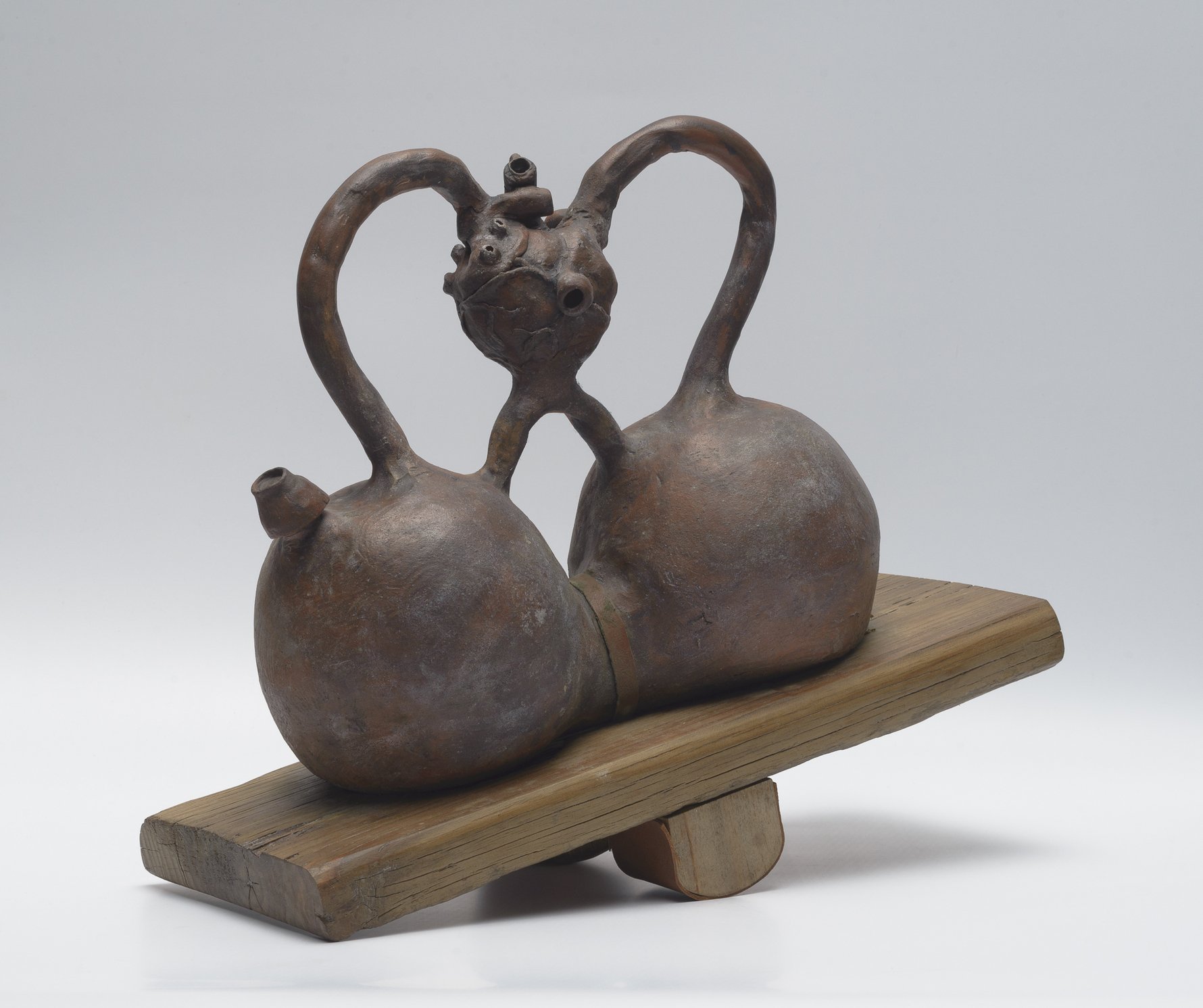
Each merit award winner receives a cash prize of R10,000. In the words of Pfunzo Sidogi, "Artists are using their creativity to respond to, reflect on, and make artistic sense of the complexities of our world today." The Sasol New Signatures Chairperson continues, saying, "Many of the difficult personal and social stories represented in the artworks have been treated with a sensitivity that can be read as an aesthetic of ubuntu. This year's exhibition is dominated by works that not only question the family, social, political, and economic order but also restore the human element. This is the magic of the Sasol New Signatures art competition."
See Miné Kleynhans' winning installation together with runner-up Tandabantu Nathaniel Jongikhaya Matola, the five merit award winners, and over 100 more shortlisted entries at the Pretoria Art Museum. Alongside, 2023 winner Nosiviwe Matikinca holds her first solo exhibition, Ukungalingani Kwezemfundo (Educational Inequality), using fragile clay slip castings to illuminate the challenges faced by learners in public schools. Until Sun, Nov 3.
The Pretoria Art Museum is on the corner Francis Baard and Wessels Streets, Arcadia Park, Pretoria. Open Tue – Sun from 10:00 – 17:00.


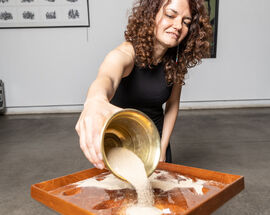
_m.jpg)
_m.jpg)


Comments